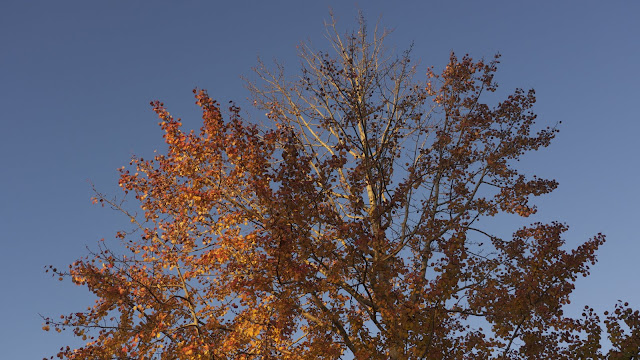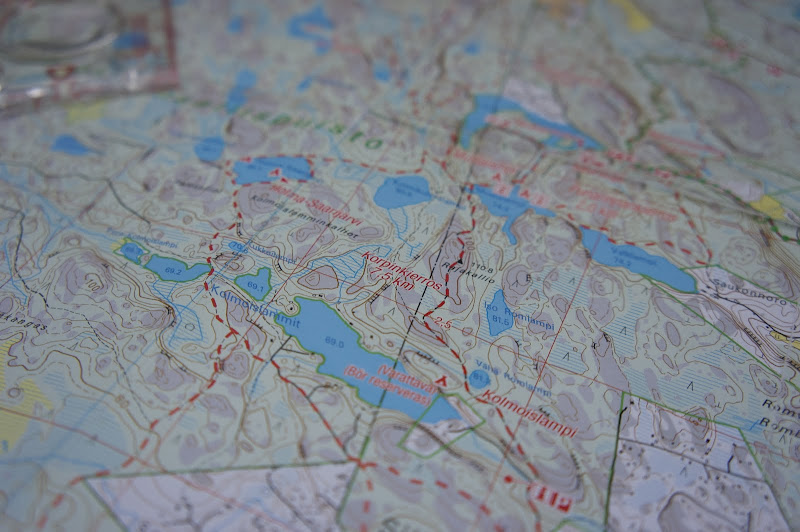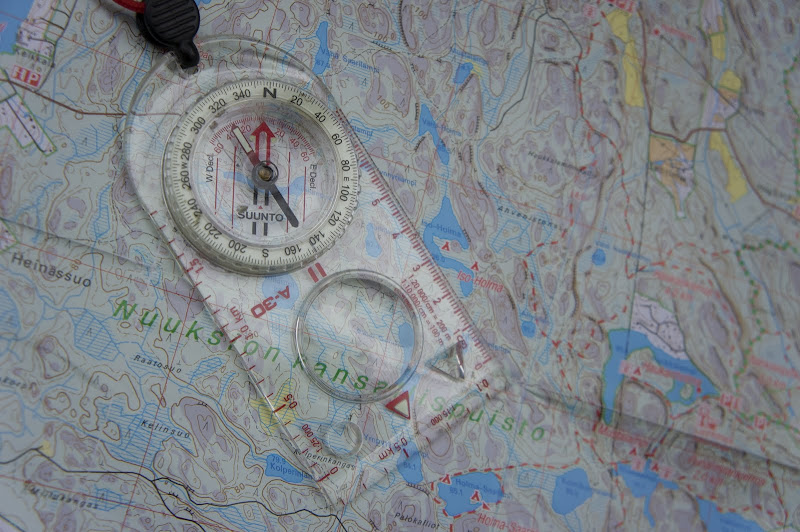And we continue with a cottage manufacturer interview today. What I love about them is that they are very open-minded people, and what I love even more is that cottages now also to start to exist in other places than the USA - Evan from Australia being a prime example! He was so kind to sit down and answer my questions, and I think you will enjoy his story.

Evan, please briefly introduce yourself and tell us who you are. Since when are you backpacking, and how did you start?
My name is Evan Howard and I run Terra Rosa Gear. I started backpacking seriously about 5 years ago. Growing up in British Columbia I was outdoors all the time and consider that to be a large reason for my love of the outdoors. I now live in beautiful Sydney, Australia and do most of my backpacking in the Blue Mountains to the west of the city.
How often are you out hiking and camping nowadays
I try to get out as often as I can. I aim for at least 2-4 times per month for a few nights. I also do a few longer trips a year. I have just arrived back from a 2 week trip in the Coastal Mountain range in British Columbia.
Are you more of a "weekend hiker" or do you have some long distance trails under your belt?
I have no long distance trails under my belt such as the well know AT, PCT and also here in Australia, the A.A.W.T. (Aussie Alps Walking Track). When I go out on longer trips I really enjoy being off track and exploring the area that I am in.
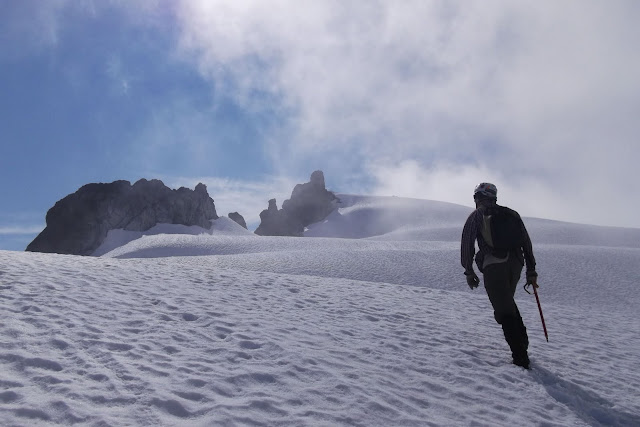
Which category would you put yourself in: SUL, UL, Lightweight or Bushcraft*? What is your typical baseweight?
It depends on the trip really. I could fit into anything from UL to bushcraft. I enjoy the challenge of getting my pack as light as possible but I also love the history behind bushcraft and the atmosphere created by an open fire. I’m honestly not sure what my exact base weights are but they are very comfortable to carry without having to sacrifice any important gear.
Please tell us where the name "Terra Rosa Gear" came from, and what it stands for.
The name Terra Rosa Gear has two meanings. Terra Rosa means “red earth” which Australia is famous for having a lot of. Also and more personally, in British Columbia there is a remote Glacier called the Terrarosa Glacier. I have now completed two successful expeditions there, climbing the amazing spire peaks and exploring the area for a historic legend. The glacier is one of the most beautiful and exciting places I have seen. I wanted to capture some of that for inspiration with Terra Rosa Gear.
Terra Rosa Gear makes lightweight tarps and quilt covers. Can you tell us how the idea to start the company emerged and how you see its future?
It would have been early 2009 - I got my first camping hammock and wanted to get a tarp for it. After looking around I found there was nothing in Australia that suited what I wanted. So I sat
down and stitched one up on my girlfriend’s sewing machine. Things really went from there and only a few months later I had my first trip where everything other then my airmat was made by my own hands (including my sleeping quilt, tarp, backpack). It was a very satisfying feeling. I then worked on improving my manufacturing skills to the highest level I could before starting www.terrarosagear.com in mid 2010. I hope that in the future, Terra Rosa Gear will continue to develop its reputation as a reliable local (aussie) manufacturer of quality outdoor gear for whatever your needs -SUL to Bushcraft.
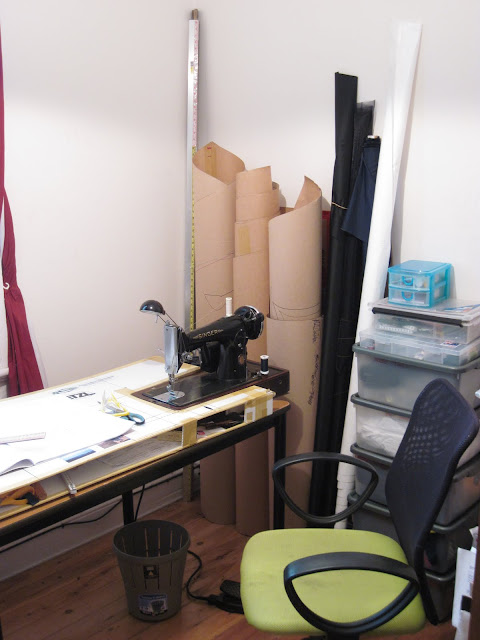
What makes Terra Rosa Gear different from other cottages?
First, I would say location. To my knowledge there is no one else who makes tarps and custom gear here in Australia.
Second, I work one-on-one with customers to get a thorough understanding of what they want from the piece of kit. I then make the piece to the specs (specifications) they give so that the end product is as close as possible to what the customer had in mind.
Third, is that although I work mainly with the lightweight fabrics I can and do also work with other materials such as canvas and heavier nylons. The skills from using and working with one really transfers well between the different types of material.
The Terra Rosa Gear tyvek and silnylon tarps and the tyvek quilt cover are not yet very well known among the northern backpackers, how does it look like in Australia and New Zealand? Are your products well known among the down-under hikers and backpackers?
Slowly but surely the Terra Rosa Gear's 'Name' is getting out and about around Australia and NZ as well as overseas. I use word of mouth and a few online forums in which I take part to pass on any news. Also, my gear is better known within the small but rapidly growing hammock community here in Australia.
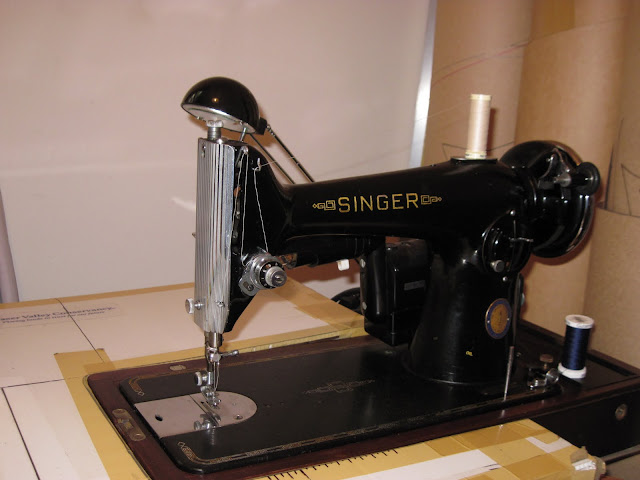
Can you tell us a bit how you went about the design process of the Exploring tarp, and where the inspiration came from?
The exploring tarp is my ideal tarp for the Australian Spring through Autumn season. What I wanted when I set about designing the tarp was a multi-purpose tarp for either sleeping on the ground or in a hammock. I wanted it to be as compact and as light as possible. If you notice on the Exploring tarp the seam
crosses the tarp at the centre. There is no seam along the ridgeline. This is because there was a lot of wasted material in the cutting process when the seam was also the ridgeline. I made a few different proto types and, seeing how much fabric was being lost, made a decision to use my materials as efficiently as possible so as to minimize wastage.
Evan, we love to be let in on the work-in-progress stuff! Can you let us know what kind of new products you're working on at the moment?
Of course - there are no secrets here. I'm currently working on a range of net tents that will suit T.R.G’s tarps as well as most common tarp shelters that people might already own. I'm very excited about these- they are simple but effective. There are also a fews things in some neat materials.
Any new UL materials that have you all excited?
Oh yeah, the textile industry is always on the move. I have been working a lot with .75 oz spinnaker as well as cuben fibre. I have also been looking into very light weight canvas for use in winter shelters.
How works the R&D at Terra Rosa Gear, do you have a need yourself that you try to fix, or do some of your clients inspire you for new products and ask you for solutions to their problems?
I would have to say both. I am 190cm tall (6 feet 3 inches) and a lot of gear is just slightly small for me. Over the years I have modified a lot of my own gear to fit my height, so my designs tend to be for slightly taller people. Clients often have great ideas and are always challenging me to find new ways to solve problems with their gear and I really enjoy that process.
Where do your customer come from?
The majority of my customer base are from here in Australia. I get lots of interest from my home state of New South Wales and from Tasmania, where the mountains make for great backpacking.

Are you in touch with other cottage manufacturers in Australia, the USA, Europe, Japan, and other places?
Yes, I speak with a few in the USA. There are also a few small Australian-based businesses I keep in touch with, although they are not necessarily Backpacking-related companies. We mainly chat about materials and other bits of hard wear.
What is your favorite backpack, sleep system and shelter?
My favourite backpack would be my trusty Aussie-made One Planet Industrial HR pack. It’s a great pack that has travelled with me for many kilometres now. I can fit everything I need for a two week climbing trip in there. My favourite sleep system would be my hammock set up. I had Brandon at Warbonnet sew me up one of the famous BlackBird hammocks a couple of years back. It’s the double layer 1.1oz and I have the footbox on the left. I have a a few quilts that I made to suite the expected temps on a given trip and a 3/4 length underquilt that is very warm. Its a great system and very fun to use. I also really enjoy using the Adventuring tarp. Its very simple and easy to use. I have taken it on trips through the Tasmanian Scrub all the way to the glacier country in Canada.
Any other favourite piece of gear which you always carry with you?
Definitely - my billy, I have eaten many meals and drank many liters of tea from it. Also I have a walking stick that I carved a few years ago. It comes along, even on most climbing trips. It's great to use with the tarp set-up when sleeping on the ground.
When and where was your last backpacking trip?
My last little trip was last weekend in the Blue Mtns of New South Wales. It was a Wilderness Search and Rescue exercise. My last big trip was in August where for two weeks, my climbing partner Adam and I climbed 7 peaks and traversed 3 glacial complexes in British Columbia. This was around the Terrarosa Glacier as well as the Stave Glacier. It was an epic and inspiring trip.
Are you planning to get out for a trip soon, and enjoy the spring (Australia has reversed season from the North!) season?
That’s right it is spring right now and the Waratah flowers are blooming here. I will be heading out for 3 days next week to an amazing area in the Kanangra Boyd National park.
Do you think ultralight backpacking will become more popular and break into the mass market, or will it continue to be something for a small group of people?
I think that ultralight backpacking will no doubt become more popular as people see the benefit, challenge, and the enjoyment of toting lighter packs. From my experience, I think there are also a lot of people who tend to cross back and forth between the various weights. For example, people who enjoy SUL and UL might also enjoy Bushcraft and vice versa.
As for the mass market, it's hard to predict these things. It would be nice if more people enjoyed and had a love for the outdoors and wilderness. I think maybe if people were outdoors more they would develop more of an appreciation for the environment and work harder to prevent its destruction.
Evan, thank you for taking the time to answer my questions =) Is there something you would like to add?
Yes, Thank you very much Hendrik for the interview. It’s an honour to be included in your list along with with some legends of the ultralight backpacking scene. Also If I may I would like to thank the great people who make up the outdoor community in Australia. It is a pleasure to be involved with them and to make custom gear to their needs. Thanks again. All the best and safe travels.
----
*Definition of "Bushcraft: Supposed to be lightweight, but because of the massive amount of necessary bushcraft gear the Bushcraft Follower carries closer to 20 kg than the 5 which Nessmuk carried.
Evan, please briefly introduce yourself and tell us who you are. Since when are you backpacking, and how did you start?
My name is Evan Howard and I run Terra Rosa Gear. I started backpacking seriously about 5 years ago. Growing up in British Columbia I was outdoors all the time and consider that to be a large reason for my love of the outdoors. I now live in beautiful Sydney, Australia and do most of my backpacking in the Blue Mountains to the west of the city.
How often are you out hiking and camping nowadays
I try to get out as often as I can. I aim for at least 2-4 times per month for a few nights. I also do a few longer trips a year. I have just arrived back from a 2 week trip in the Coastal Mountain range in British Columbia.
Are you more of a "weekend hiker" or do you have some long distance trails under your belt?
I have no long distance trails under my belt such as the well know AT, PCT and also here in Australia, the A.A.W.T. (Aussie Alps Walking Track). When I go out on longer trips I really enjoy being off track and exploring the area that I am in.
Which category would you put yourself in: SUL, UL, Lightweight or Bushcraft*? What is your typical baseweight?
It depends on the trip really. I could fit into anything from UL to bushcraft. I enjoy the challenge of getting my pack as light as possible but I also love the history behind bushcraft and the atmosphere created by an open fire. I’m honestly not sure what my exact base weights are but they are very comfortable to carry without having to sacrifice any important gear.
Please tell us where the name "Terra Rosa Gear" came from, and what it stands for.
The name Terra Rosa Gear has two meanings. Terra Rosa means “red earth” which Australia is famous for having a lot of. Also and more personally, in British Columbia there is a remote Glacier called the Terrarosa Glacier. I have now completed two successful expeditions there, climbing the amazing spire peaks and exploring the area for a historic legend. The glacier is one of the most beautiful and exciting places I have seen. I wanted to capture some of that for inspiration with Terra Rosa Gear.
Terra Rosa Gear makes lightweight tarps and quilt covers. Can you tell us how the idea to start the company emerged and how you see its future?
It would have been early 2009 - I got my first camping hammock and wanted to get a tarp for it. After looking around I found there was nothing in Australia that suited what I wanted. So I sat
down and stitched one up on my girlfriend’s sewing machine. Things really went from there and only a few months later I had my first trip where everything other then my airmat was made by my own hands (including my sleeping quilt, tarp, backpack). It was a very satisfying feeling. I then worked on improving my manufacturing skills to the highest level I could before starting www.terrarosagear.com in mid 2010. I hope that in the future, Terra Rosa Gear will continue to develop its reputation as a reliable local (aussie) manufacturer of quality outdoor gear for whatever your needs -SUL to Bushcraft.
What makes Terra Rosa Gear different from other cottages?
First, I would say location. To my knowledge there is no one else who makes tarps and custom gear here in Australia.
Second, I work one-on-one with customers to get a thorough understanding of what they want from the piece of kit. I then make the piece to the specs (specifications) they give so that the end product is as close as possible to what the customer had in mind.
Third, is that although I work mainly with the lightweight fabrics I can and do also work with other materials such as canvas and heavier nylons. The skills from using and working with one really transfers well between the different types of material.
The Terra Rosa Gear tyvek and silnylon tarps and the tyvek quilt cover are not yet very well known among the northern backpackers, how does it look like in Australia and New Zealand? Are your products well known among the down-under hikers and backpackers?
Slowly but surely the Terra Rosa Gear's 'Name' is getting out and about around Australia and NZ as well as overseas. I use word of mouth and a few online forums in which I take part to pass on any news. Also, my gear is better known within the small but rapidly growing hammock community here in Australia.
Can you tell us a bit how you went about the design process of the Exploring tarp, and where the inspiration came from?
The exploring tarp is my ideal tarp for the Australian Spring through Autumn season. What I wanted when I set about designing the tarp was a multi-purpose tarp for either sleeping on the ground or in a hammock. I wanted it to be as compact and as light as possible. If you notice on the Exploring tarp the seam
crosses the tarp at the centre. There is no seam along the ridgeline. This is because there was a lot of wasted material in the cutting process when the seam was also the ridgeline. I made a few different proto types and, seeing how much fabric was being lost, made a decision to use my materials as efficiently as possible so as to minimize wastage.
Evan, we love to be let in on the work-in-progress stuff! Can you let us know what kind of new products you're working on at the moment?
Of course - there are no secrets here. I'm currently working on a range of net tents that will suit T.R.G’s tarps as well as most common tarp shelters that people might already own. I'm very excited about these- they are simple but effective. There are also a fews things in some neat materials.
Any new UL materials that have you all excited?
Oh yeah, the textile industry is always on the move. I have been working a lot with .75 oz spinnaker as well as cuben fibre. I have also been looking into very light weight canvas for use in winter shelters.
How works the R&D at Terra Rosa Gear, do you have a need yourself that you try to fix, or do some of your clients inspire you for new products and ask you for solutions to their problems?
I would have to say both. I am 190cm tall (6 feet 3 inches) and a lot of gear is just slightly small for me. Over the years I have modified a lot of my own gear to fit my height, so my designs tend to be for slightly taller people. Clients often have great ideas and are always challenging me to find new ways to solve problems with their gear and I really enjoy that process.
Where do your customer come from?
The majority of my customer base are from here in Australia. I get lots of interest from my home state of New South Wales and from Tasmania, where the mountains make for great backpacking.
Are you in touch with other cottage manufacturers in Australia, the USA, Europe, Japan, and other places?
Yes, I speak with a few in the USA. There are also a few small Australian-based businesses I keep in touch with, although they are not necessarily Backpacking-related companies. We mainly chat about materials and other bits of hard wear.
What is your favorite backpack, sleep system and shelter?
My favourite backpack would be my trusty Aussie-made One Planet Industrial HR pack. It’s a great pack that has travelled with me for many kilometres now. I can fit everything I need for a two week climbing trip in there. My favourite sleep system would be my hammock set up. I had Brandon at Warbonnet sew me up one of the famous BlackBird hammocks a couple of years back. It’s the double layer 1.1oz and I have the footbox on the left. I have a a few quilts that I made to suite the expected temps on a given trip and a 3/4 length underquilt that is very warm. Its a great system and very fun to use. I also really enjoy using the Adventuring tarp. Its very simple and easy to use. I have taken it on trips through the Tasmanian Scrub all the way to the glacier country in Canada.
Any other favourite piece of gear which you always carry with you?
Definitely - my billy, I have eaten many meals and drank many liters of tea from it. Also I have a walking stick that I carved a few years ago. It comes along, even on most climbing trips. It's great to use with the tarp set-up when sleeping on the ground.
When and where was your last backpacking trip?
My last little trip was last weekend in the Blue Mtns of New South Wales. It was a Wilderness Search and Rescue exercise. My last big trip was in August where for two weeks, my climbing partner Adam and I climbed 7 peaks and traversed 3 glacial complexes in British Columbia. This was around the Terrarosa Glacier as well as the Stave Glacier. It was an epic and inspiring trip.
Are you planning to get out for a trip soon, and enjoy the spring (Australia has reversed season from the North!) season?
That’s right it is spring right now and the Waratah flowers are blooming here. I will be heading out for 3 days next week to an amazing area in the Kanangra Boyd National park.
Do you think ultralight backpacking will become more popular and break into the mass market, or will it continue to be something for a small group of people?
I think that ultralight backpacking will no doubt become more popular as people see the benefit, challenge, and the enjoyment of toting lighter packs. From my experience, I think there are also a lot of people who tend to cross back and forth between the various weights. For example, people who enjoy SUL and UL might also enjoy Bushcraft and vice versa.
As for the mass market, it's hard to predict these things. It would be nice if more people enjoyed and had a love for the outdoors and wilderness. I think maybe if people were outdoors more they would develop more of an appreciation for the environment and work harder to prevent its destruction.
Evan, thank you for taking the time to answer my questions =) Is there something you would like to add?
Yes, Thank you very much Hendrik for the interview. It’s an honour to be included in your list along with with some legends of the ultralight backpacking scene. Also If I may I would like to thank the great people who make up the outdoor community in Australia. It is a pleasure to be involved with them and to make custom gear to their needs. Thanks again. All the best and safe travels.
----
*Definition of "Bushcraft: Supposed to be lightweight, but because of the massive amount of necessary bushcraft gear the Bushcraft Follower carries closer to 20 kg than the 5 which Nessmuk carried.

